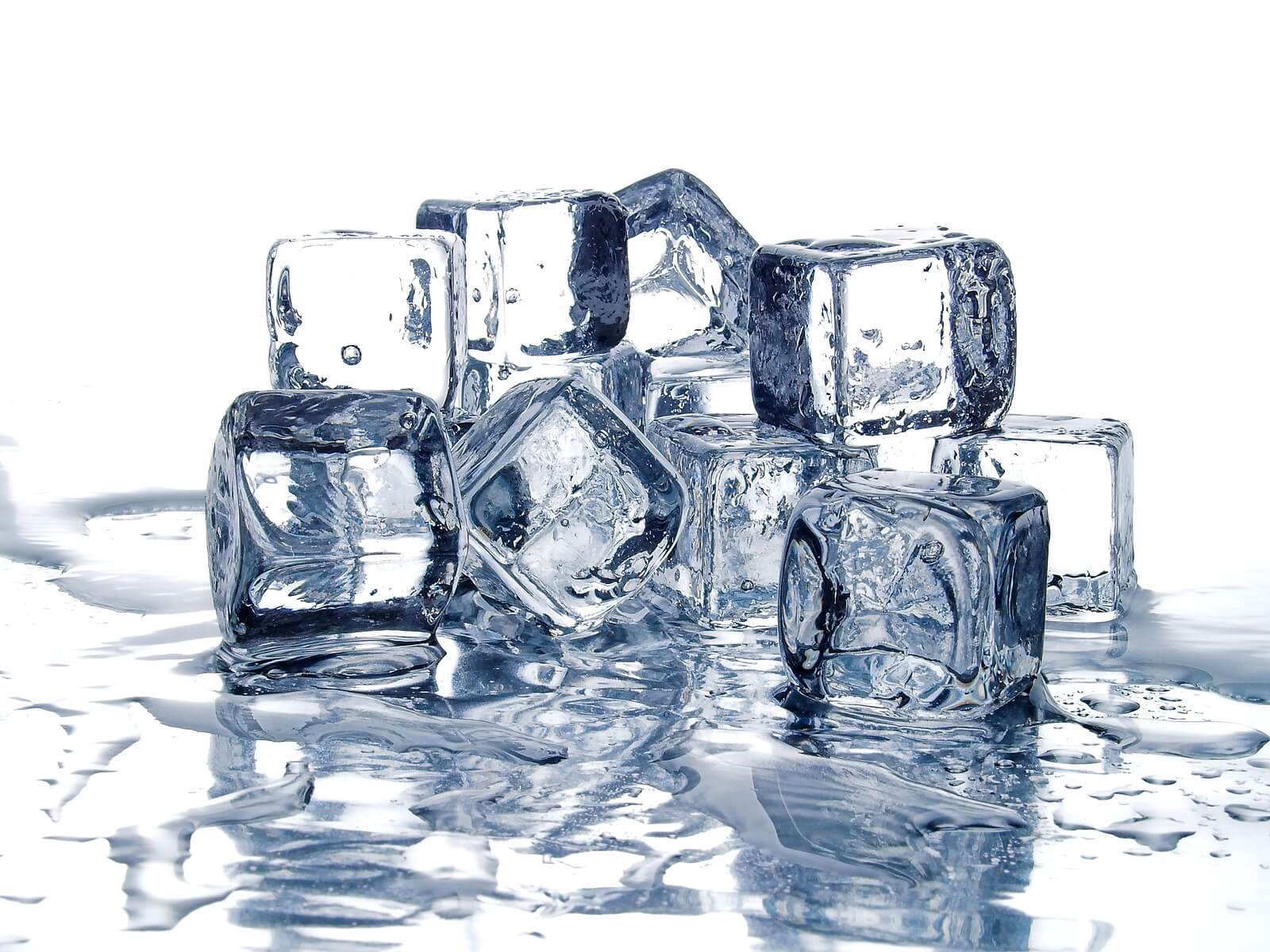How to Explain States of Matter to Kids in a Fun Way


Written and verified by the teacher Samanta Ruiz
Teaching the states of matter to children may seem a bit complicated, but it’s not if you do it with a proper didactic approach and in a fun way. However, before we begin, we should make a small glossary of concepts about matter and its states.
What is matter?
Everything around us, including ourselves, is made up of matter, which is the sum of very small particles in portions, with a certain mass and volume. Those microscopic parts that form it are united by cohesive forces that determine the states in which it appears.

Those states are the following:
- Solid. The particles are very cohesive, ordered, and barely move. The result is a rigid matter, with constant mass and volume.
- Liquid. With weaker forces of attraction, the particles have greater freedom of movement and sliding, so liquids are formless and flowing. Matter in this state has no definite shape but adapts to the place that contains it (such as a flask, a bottle, a river bed, etc.).
- Gaseous. In this state, there are almost no cohesive forces between the particles, so they move in any direction. Gases take the shape of the container that contains them and expand in all the available space inside it.
An article in the journal Science Education recommends paying attention to the fact that the transformation of matter is due to energy exchanges that modify its temperature.
States of matter for kids: What are the processes of change?
Matter has the quality of being able to change its state when subjected to the action of temperature and pressure. A great way for children to learn how changes of state take place is to guide them in their first steps in the scientific method: Observe, think, experiment, and, from there, ask questions.
At home or at school, the idea is that the little ones can, with explanations and fun experiments, learn science by doing science.
Experiments to do at home to explain the states of matter
Now that we’ve reviewed the states of matter, we’ll approach the topic of changes of state with a series of fun experiments.
“They explained it to me and I forgot. I saw it and understood it. I did it and learned it.”
-Confucius, Chinese thinker-
1. Why does chocolate melt in your hand?
Children love chocolate, so this experiment will instantly grab their attention! As a first step, we observe that chocolate is in a solid state, with a certain volume. As we’ve already mentioned, its particles are tightly bound together to keep their shape.
So, we’ll then hold the chocolate in our hands for a while. As the heat passes from our hands to the chocolate, the increase in temperature causes its molecular structure to begin to “disarrange” and the matter loses its shape. If pressure is exerted, the process is faster.
The chocolate melts and becomes a liquid state spread out on the hand. This is a fun explanation for the change from solid to liquid state, or melting.
2. Ice traps things
Set up a container with water and a small object in it, such as a piece of rock or a marble. Let the children play with it, put their hand in the water, transfer the liquid to another container, and grab the object. What temperature do they feel? What shape is the water? Can they get the object out of the water?
Then, put the container in the freezer until it freezes, and then present it again to the children and ask the same questions. The differences in the answers explain the solidification process: When liquid water is subjected to low temperatures, its particles attract each other more strongly and stop moving, transforming into ice.
In this state, water has a more ordered molecular structure and no movement between its components. The object is trapped in the structure and can only escape when the ice is subjected to pressure and breaks or is subjected to warmer temperatures and returns to its liquid state.
3. Make rain with a pot
For this explanation, you need to put water in a pot and boil it. Leave it covered and turn off the heat. Once it cools a little, uncover the pot and immediately ask the children what they see. Does a cloud rise and disappear?

That cloud that comes out of the pot is water vapor and it means that the liquid, due to the action of temperature, changed its state to gaseous, that is, its particles are no longer attracted, but expand, and the evaporation process takes place. This is the same way clouds are formed.
Lift the lid of the pot and show the children the drops that have formed on its surface and how they fall like rain. What happens now? Water again! In this experiment, water changes from a liquid to a gaseous state and then back to a liquid.
When the hot vapor particles collide with the cooler surface of the lid, condensation occurs and liquid water droplets form. As they cohere, they increase in volume and fall under their own weight. Rain is produced in the same way.
Learning the states of matter with fun explanations
Inquiry learning, in which children construct scientific knowledge by answering questions through experiments, is a very fun way to find explanations for the processes of state changes in matter.
As a pedagogical strategy, as the journal Social Sciences and Education states, the scientific method becomes transversal, while students nurture critical thinking and develop cognitive skills.
Working with everyday elements makes it possible for them to quickly understand the concepts, as they themselves are involved in the search. Therefore, explaining the states of matter to children is simple if appropriate methods are applied and the little ones are guided to make their own scientific discoveries.
Teaching the states of matter to children may seem a bit complicated, but it’s not if you do it with a proper didactic approach and in a fun way. However, before we begin, we should make a small glossary of concepts about matter and its states.
What is matter?
Everything around us, including ourselves, is made up of matter, which is the sum of very small particles in portions, with a certain mass and volume. Those microscopic parts that form it are united by cohesive forces that determine the states in which it appears.

Those states are the following:
- Solid. The particles are very cohesive, ordered, and barely move. The result is a rigid matter, with constant mass and volume.
- Liquid. With weaker forces of attraction, the particles have greater freedom of movement and sliding, so liquids are formless and flowing. Matter in this state has no definite shape but adapts to the place that contains it (such as a flask, a bottle, a river bed, etc.).
- Gaseous. In this state, there are almost no cohesive forces between the particles, so they move in any direction. Gases take the shape of the container that contains them and expand in all the available space inside it.
An article in the journal Science Education recommends paying attention to the fact that the transformation of matter is due to energy exchanges that modify its temperature.
States of matter for kids: What are the processes of change?
Matter has the quality of being able to change its state when subjected to the action of temperature and pressure. A great way for children to learn how changes of state take place is to guide them in their first steps in the scientific method: Observe, think, experiment, and, from there, ask questions.
At home or at school, the idea is that the little ones can, with explanations and fun experiments, learn science by doing science.
Experiments to do at home to explain the states of matter
Now that we’ve reviewed the states of matter, we’ll approach the topic of changes of state with a series of fun experiments.
“They explained it to me and I forgot. I saw it and understood it. I did it and learned it.”
-Confucius, Chinese thinker-
1. Why does chocolate melt in your hand?
Children love chocolate, so this experiment will instantly grab their attention! As a first step, we observe that chocolate is in a solid state, with a certain volume. As we’ve already mentioned, its particles are tightly bound together to keep their shape.
So, we’ll then hold the chocolate in our hands for a while. As the heat passes from our hands to the chocolate, the increase in temperature causes its molecular structure to begin to “disarrange” and the matter loses its shape. If pressure is exerted, the process is faster.
The chocolate melts and becomes a liquid state spread out on the hand. This is a fun explanation for the change from solid to liquid state, or melting.
2. Ice traps things
Set up a container with water and a small object in it, such as a piece of rock or a marble. Let the children play with it, put their hand in the water, transfer the liquid to another container, and grab the object. What temperature do they feel? What shape is the water? Can they get the object out of the water?
Then, put the container in the freezer until it freezes, and then present it again to the children and ask the same questions. The differences in the answers explain the solidification process: When liquid water is subjected to low temperatures, its particles attract each other more strongly and stop moving, transforming into ice.
In this state, water has a more ordered molecular structure and no movement between its components. The object is trapped in the structure and can only escape when the ice is subjected to pressure and breaks or is subjected to warmer temperatures and returns to its liquid state.
3. Make rain with a pot
For this explanation, you need to put water in a pot and boil it. Leave it covered and turn off the heat. Once it cools a little, uncover the pot and immediately ask the children what they see. Does a cloud rise and disappear?

That cloud that comes out of the pot is water vapor and it means that the liquid, due to the action of temperature, changed its state to gaseous, that is, its particles are no longer attracted, but expand, and the evaporation process takes place. This is the same way clouds are formed.
Lift the lid of the pot and show the children the drops that have formed on its surface and how they fall like rain. What happens now? Water again! In this experiment, water changes from a liquid to a gaseous state and then back to a liquid.
When the hot vapor particles collide with the cooler surface of the lid, condensation occurs and liquid water droplets form. As they cohere, they increase in volume and fall under their own weight. Rain is produced in the same way.
Learning the states of matter with fun explanations
Inquiry learning, in which children construct scientific knowledge by answering questions through experiments, is a very fun way to find explanations for the processes of state changes in matter.
As a pedagogical strategy, as the journal Social Sciences and Education states, the scientific method becomes transversal, while students nurture critical thinking and develop cognitive skills.
Working with everyday elements makes it possible for them to quickly understand the concepts, as they themselves are involved in the search. Therefore, explaining the states of matter to children is simple if appropriate methods are applied and the little ones are guided to make their own scientific discoveries.
All cited sources were thoroughly reviewed by our team to ensure their quality, reliability, currency, and validity. The bibliography of this article was considered reliable and of academic or scientific accuracy.
- Couso, D., Jimenez-Liso, M.R., Refojo, C. & Sacristán, J.A. (Coords) (2020) Enseñando Ciencia con Ciencia. FECYT & Fundacion Lilly. Madrid: Penguin Random House. https://www.fecyt.es/es/publicacion/ensenando-ciencia-con-ciencia
- Cruz-Guzmán, M. A., García-Carmona, A., & García-Legaz, A. M. C. (2017). Aprendiendo sobre los cambios de estado en educación infantil mediante secuencias de pregunta-predicción-comprobación experimental. Enseñanza de las ciencias: revista de investigación y experiencias didácticas, 35(3), 175-193. https://raco.cat/index.php/Ensenanza/article/view/v35-n3-cruz-guzman-garcia-criado/419801
- Cuesta, M. L. M. (2019). El método científico como estrategia pedagógica para activar el pensamiento crítico y reflexivo. Ciencias Sociales y Educación, 8 (15), 87-104. https://repository.udem.edu.co/handle/11407/6672
- Sopandi, W., Kadarohman, A., Rosbiono, M., Latip, A., & Restiana, S. &. R. (2018). The courseware of discontinuous nature of matter in teaching the states of matter and their changes. International Journal of Instruction, 11(1), 61–76. https://www.researchgate.net/publication/322233144_The_Courseware_of_Discontinuous_Nature_of_Matter_in_Teaching_the_States_of_Matter_and_Their_Changes
This text is provided for informational purposes only and does not replace consultation with a professional. If in doubt, consult your specialist.








